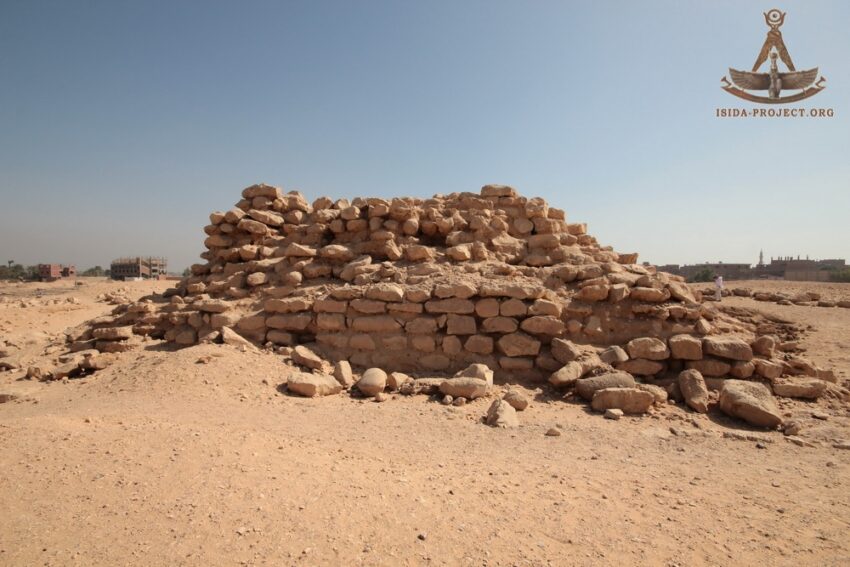The Pyramid of Sinki at Abydos is one of Egypt’s lesser-known pyramids. It dates back to the 13th Dynasty, around the 18th century BC. The structure is attributed to a pharaoh named Senebkay, whose reign was relatively short-lived. The pyramid remains a significant archaeological find, providing insights into a tumultuous period in Egypt’s history. Its discovery added to the understanding of the Second Intermediate Period, a time when Egypt was not united under a single ruler.
Get your dose of History via Email
Historical Background of the Pyramid of Sinki Egypt
The Pyramid of Sinki was unearthed in 1901 by Arthur Weigall and Flinders Petrie. They were exploring the Abydos necropolis, a rich archaeological site. The pyramid’s builder, Pharaoh Senebkay, was a ruler of the Abydos Dynasty. This dynasty was previously unknown until the discovery of his tomb in 2014. The Abydos Dynasty likely ruled a local kingdom in the midst of the Second Intermediate Period.
Pharaoh Senebkay’s reign was brief, estimated to have lasted only four years. This was a time of political fragmentation in Egypt. The country was divided between the Hyksos rulers in the north and the Theban rulers in the south. Senebkay’s pyramid reflects the diminished resources of a ruler during this era. It was a time when the grandeur of the Old and Middle Kingdoms had faded.
Later, the pyramid did not become a significant site for habitation or other historical events. Its importance lies in its contribution to the understanding of Egypt’s political landscape during the Second Intermediate Period. The pyramid’s discovery shed light on the existence of a local dynasty that ruled from Abydos.
The pyramid has not been the scene of major historical events since its construction. However, its excavation has provided valuable artifacts. These include the pharaoh’s canopic chest and funerary mask. These finds offer a glimpse into the burial practices of a period not well represented in Egypt’s archaeological record.
Despite its dilapidated state, the Pyramid of Sinki is a testament to the resilience of Egyptian culture. It stands as a monument to a pharaoh who ruled during a time of great adversity. The pyramid’s discovery has filled a gap in the history of ancient Egypt, highlighting the complexity of its dynastic periods.
About the Pyramid of Sinki Egypt
The Pyramid of Sinki is a modest structure compared to the grand pyramids of Giza. It was built using mudbrick, a common material for constructions of that era. The pyramid’s core was made of local limestone. The outer casing, which has since eroded away, may have been of finer quality limestone.
The pyramid’s design was simple. It featured a flat-roofed burial chamber, which was a departure from the grander designs of earlier periods. The burial chamber was accessible through a vertical shaft, a feature typical of pyramids from the Middle Kingdom onwards.
Due to the limited resources of the time, the pyramid lacked the elaborate decoration found in other royal tombs. The construction techniques were also less sophisticated. This reflects the economic and political decline during the Second Intermediate Period.
Architectural highlights of the pyramid are scarce due to its ruinous state. However, the layout of the substructure is similar to that of other pyramids from the same period. The simplicity of the design suggests a pragmatic approach to tomb construction during a time of instability.
The building materials and methods used in the Pyramid of Sinki’s construction provide insights into the period’s technology. They also reflect the social and political conditions that influenced its design. The pyramid remains an important piece of the puzzle in understanding Egypt’s past.
Theories and Interpretations
Several theories have emerged about the Pyramid of Sinki since its discovery. One theory suggests that it was built hastily. This is due to Senebkay’s short reign and the political instability of the time. The modest size and materials support this theory.
Another theory posits that the pyramid served as a symbolic gesture. It maintained the tradition of royal burials despite the kingdom’s reduced power. The pyramid’s existence indicates the persistence of cultural norms even in times of decline.
Mysteries surround the pyramid, particularly regarding the Abydos Dynasty. The discovery of Senebkay’s tomb raised questions about the extent of this dynasty’s rule. It also prompted reevaluation of the political dynamics of the Second Intermediate Period.
Interpretations of the pyramid’s significance have had to be matched to historical records. These records are sparse for this period. The dating of the pyramid has been carried out through pottery analysis and inscriptions found in the tomb.
The methods used for dating include stylistic comparisons of artifacts. Radiocarbon dating has also been employed to confirm the pyramid’s age. These techniques have helped place the Pyramid of Sinki within the broader timeline of Egyptian history.
At a glance
Country: Egypt
Civilization: Ancient Egyptians
Age: Approximately 3800 years old (circa 18th century BC)
Conclusion and Sources
Reputable sources used in the creation of this article include:

